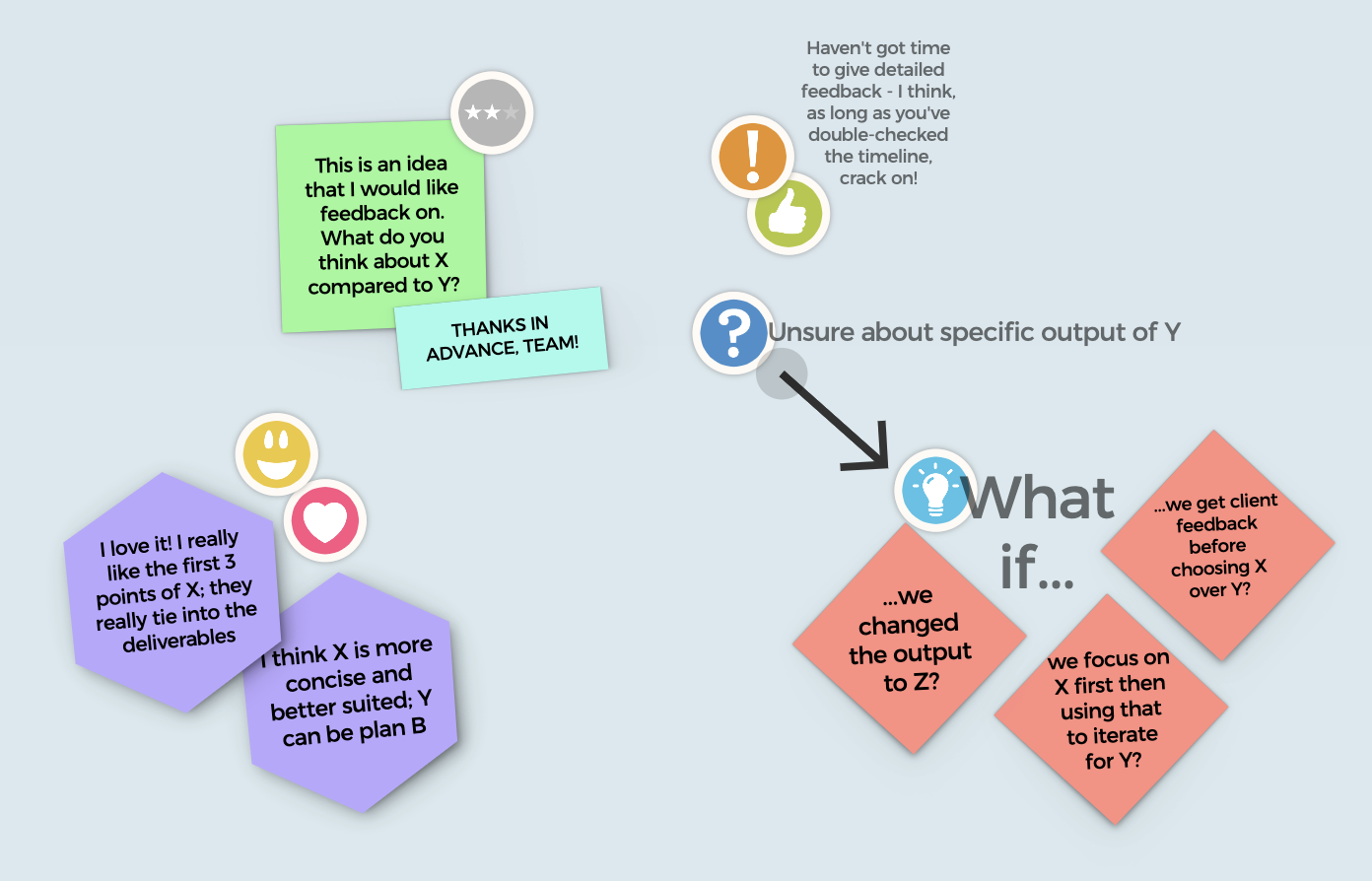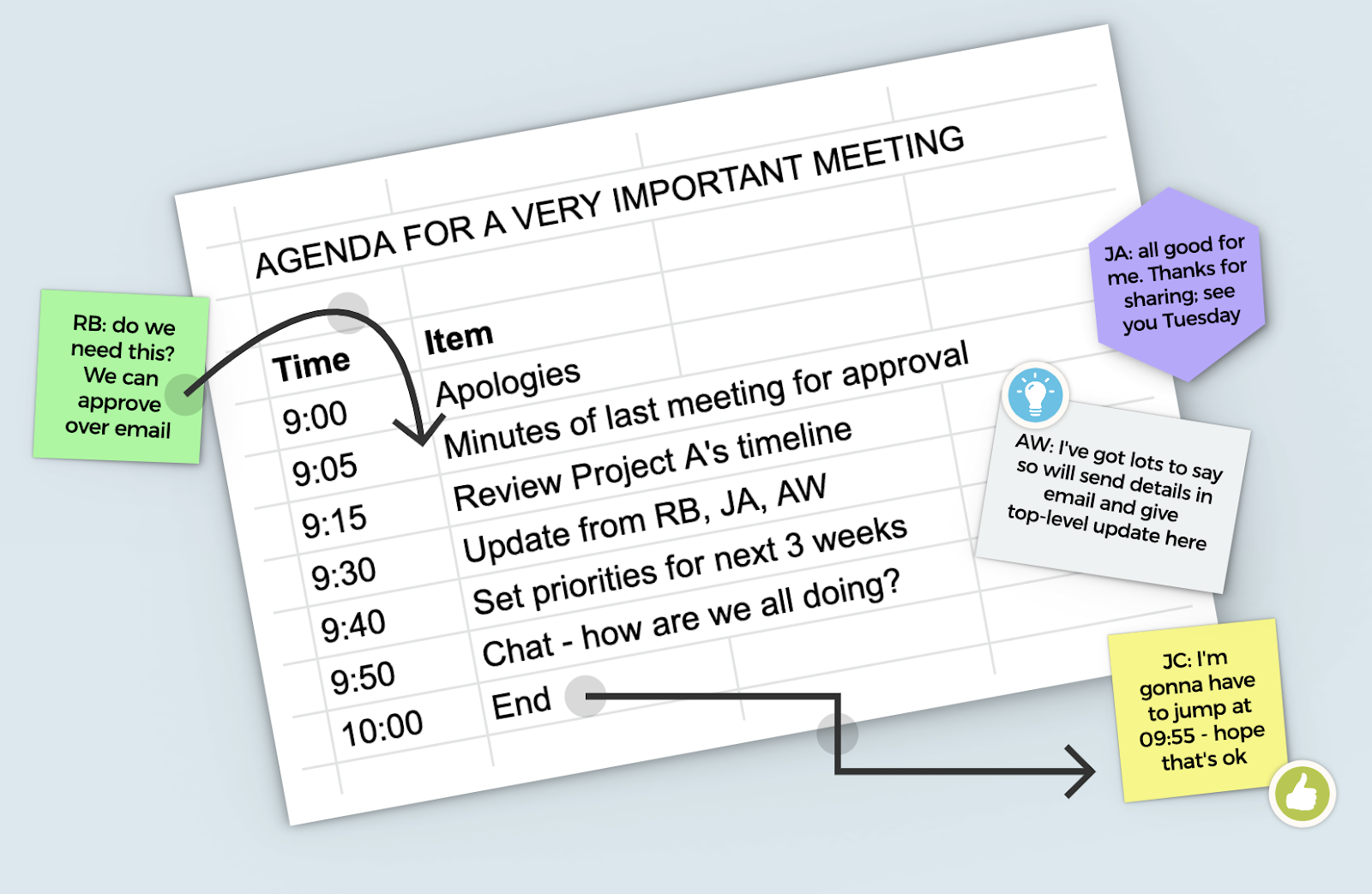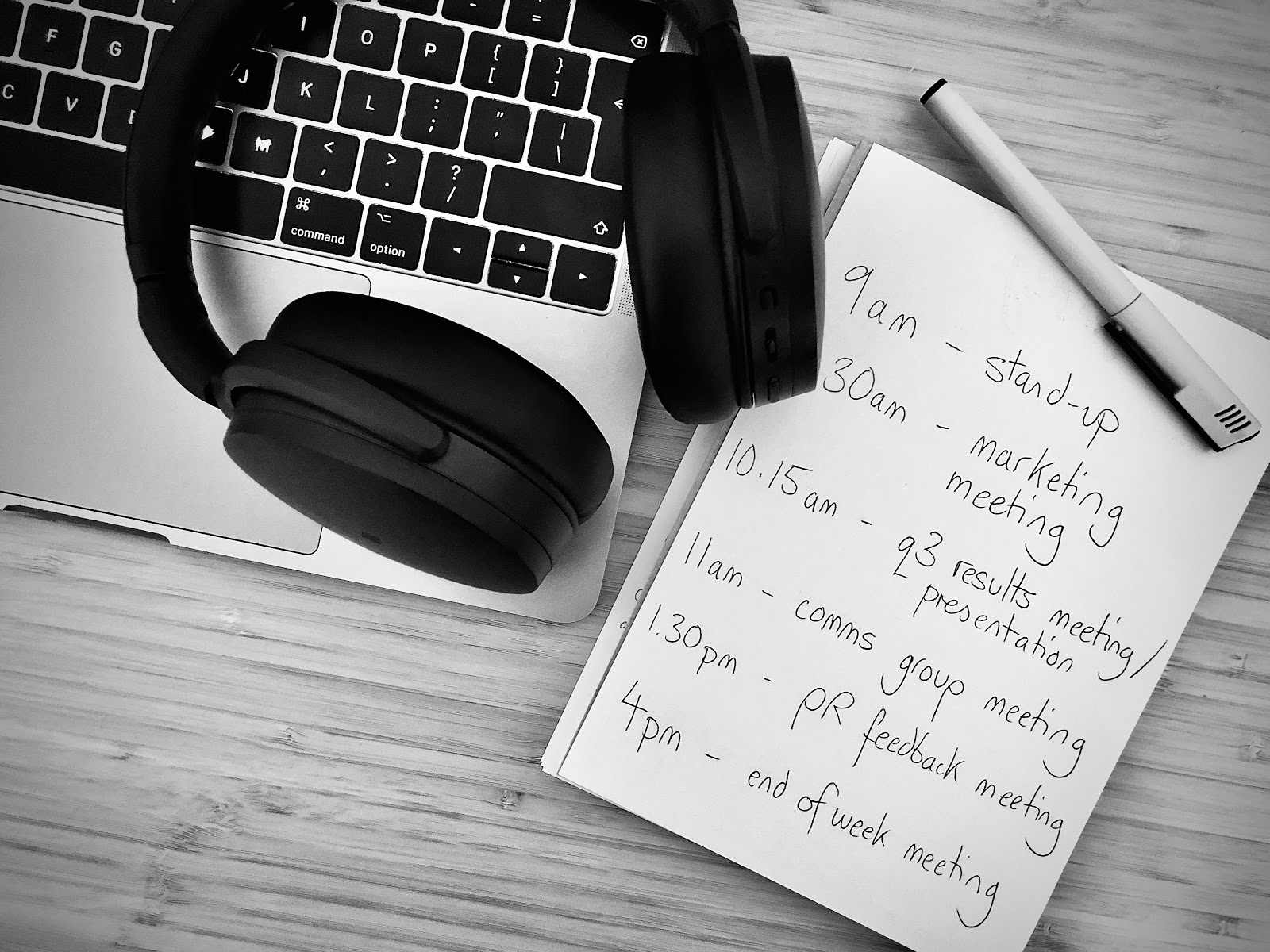5 Criteria to Help You Prepare for an Effective Meeting
Your meeting is overrunning. Someone’s delivering an unhelpful monologue so you’re clearing emails on the sly, wondering why you were invited. Sound familiar?
Meetings have become synonymous with wasted time. When working from home, the lack of actual human contact adds a whole new level of drudgery. We know. We’ve been there. We are there. But meetings don’t have to be a necessary evil. After all, a meeting is just a bunch of people that need to have a chat. With a bit of attention, awareness, and creativity, you can make sure that discussions are useful, empowering, and maybe even fun.
Use our 5 criteria to steer your team towards holding an effective meeting.
1 - Cancel the meeting
The least disruptive meeting is one that didn’t happen.
“But I need people’s feedback!” we hear you cry. Yes, you do. But you don’t need to desperately repeat the phrase “anymore feedback?” while everyone stares blankly into space thinking about lunch. Instead, ask everyone to review independently and feedback in whichever way suits them best. It takes mere seconds to set up an Ideaflip board and invite your team to add their thoughts and comments.

What other needs make you schedule a meeting? If you require people’s input into a problem, try one-on-one chats instead. If someone doesn’t have much to add they don’t need to sit through everyone else speaking. If someone has a lot to say, you can give them the time and space they need to discuss it all.
You might need to present information. This is definitely not a meeting. This is, unsurprisingly, a presentation. If possible, write down what needs to be communicated and email it, instead. Alternatively, record yourself presenting. Either of these methods mean that people can digest the information at a time, pace, and in a way which works for them without breaking their flow. Consider following up this presentation delivery with an engaging, Q&A type meeting afterwards for lively discussion.
Now you know you actually need a meeting, who should come along?
2 - Don’t invite everyone
Woah there. Step back from the invite button. Do you need more than six people? If so, split the meeting into smaller groups, all of which discuss the topic at hand before summarising the conversation to the wider group (perhaps, as above, in an email).
Not inviting someone doesn’t mean they’re out of the loop. After the meeting, disseminate notes and conclusions to the wider team, and offer them an opportunity to respond.
It becomes very difficult - especially over video call - to have a meeting with more than six people. You see this everywhere, not just in meetings: people at parties or at the dinner table naturally splinter off into smaller groups. For whatever reason, humans don’t often hold conversations involving more than a few people at once. At least, not interesting ones: a group of more than six people will actually become two or three people having a conversation in front of lots of other bored people.
You’ve invited the people you need, and left those you don’t in peace - so how do you prepare to run an effective meeting?
3 - Create an agenda and head towards a clear outcome
Everyone should know exactly what they are bringing to the conversation, and what they will take out of it. Circulate the agenda as far in advance as possible, with a clear time frame for reviewing in which attendees can add items if there is something else that they need.
Decide in advance what a clear, measurable outcome would look like for this meeting, and state it at the top of the agenda. Is it generating ten different ideas? Is it a roundtable discussion to inform a decision? Is it just a lovely team chat?
Heading into the meeting, prepare for the possibility that new information shared might make your original outcome difficult. Just make sure you’re framing in a way that heads towards that outcome. If the agenda is particularly intensive, add in white space to allow for breaks, random conversations, and overrunning items.

We recommend putting the agenda into an Ideaflip board to invite feedback ahead of time (plus, in the meeting, you could use it as a tool for recording ideas, spin-off discussions, and signalling the current item)!
Great: all of the attendees are prepared. Your big moment is here. It’s meeting time.
4 - Involve everyone, actively
Everyone in the room or on the call should be actively participating in the conversation. If an attendee seems disengaged, ask yourself why. Is it because they’re only needed for a certain part of the meeting? Invite them to join at the appropriate time, and drop out whenever they want to afterwards.
Sometimes, someone who appears disengaged might actually be listening intently. Those of us who are neurodiverse might doodle while noting down ideas, fiddle with their jewellery, or look out of the window. It doesn’t mean we’re not present and involved, ready to interject if needed.
Is the group present lacking psychological safety? If your team isn’t performing well in general, it’s not going to be able to hold an effective meeting. Work on ways to foster trust, vulnerability, and inclusion, and you’ll find that more thoughts are shared and better ideas generated.
This criterion is not about forcing people to engage with gimmicks like ice-breakers - it’s about making sure that everyone invited is naturally engaged with the topic and, if not, asking how to encourage them to be.

Phew - you’re reaching the end of your fabulous meeting!
Before you start awkwardly waving while stabbing at the leave meeting button, we have one more criterion…
5 - Summarise each item, and recap at the end
Discussions meander. People’s attention naturally wanders. Everyone’s perceptions differ. There are so many reasons to be crystal clear when wrapping up a decision or an item on the agenda, not least to make sure your interpretation aligns with everyone else’s. Sticking each summary point in a sticky note next to the agenda item on your Ideaflip board will also help those who use visual recall.
You’ll never regret taking that extra time to summarise, providing a final opportunity for everyone present to feel included and informed. Conclude the progress made and recap on the outcome. Just like we’re about to do. Ready?
These criteria require a little extra effort, sure. But if you’re in charge of organising a meeting, it’s also your responsibility - whether it’s listed in your role description or not - to ensure your peers enjoy, or at least partake, in useful discussions.
Like anything in life, the skills required to facilitate an effective meeting can’t be taught in a blog post. You need to practice, and won’t get it perfect the first time, if ever. Focus on improving, which might start by asking your team for feedback - but don’t make it a meeting.

 Online sticky notes to plan, organise and brainstorm with your team remotely
Online sticky notes to plan, organise and brainstorm with your team remotely